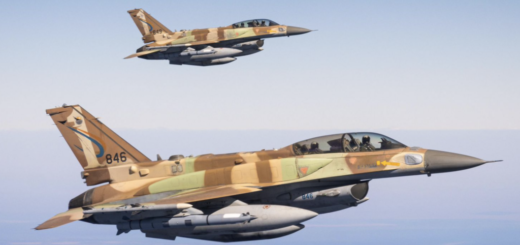Eve Air Mobility CCO Megha Bhatia shares go-to-market vision, long-term outlook

During the Paris Air Show 2025, Eve Air Mobility, Embraer’s listed advanced air mobility (AAM) subsidiary, presented its views on the electric vehicle and takeoff and landing (eVTOL) market for the decades ahead and showcased a full-scale mockup of the aircraft it expects to start testing later this year.
On June 15, 2025, Eve published its Global Market Outlook, which forecasts a global eVTOL fleet of 30,000 aircraft and a US$280 billion revenue potential by 2045.
And, while some critics of the nascent air mobility industry have pointed out the uncertainty regarding the degree of freedom that eVTOLs will have to operate in highly regulated urban airspace, Eve sees urban air mobility as the primary driver of this prospective market.
AeroTime spoke with Eve’s Chief Commercial Officer (CCO), Megha Bhatia, to get the latest update on the status of this Brazilian eVTOL program and how it is expected to fit into this tentative growth scenario.
Bhatia explained that by releasing the latest Global Market Outlook, Eve is sharing some of the data and thought processes that the company uses internally to define its strategies.
“This felt this was the right time to share our market outlook,” she said. “We believe this is a pragmatic outlook, after seeing how the industry is evolving and considering what we are learning from our customers. We want to ensure that we set the industry up for success. We are currently at a tipping point when things are starting to become real.”
Betting on global eVTOL adoption
“Urbanization is going to be the key driver,” Bhatia explained, adding that by 2050, an additional two billion people will be living in large cities, placing a huge strain on ground infrastructure, and stimulating new forms of transportation that enable time savings.
“Around 80% of our total addressable market is made of last mile journeys or short urban hops, including airport to city transfers,” she stated.
Even if Eve’s most optimistic scenarios come to fruition, this would only represent around 0.1% of all urban movements and around 2% of total air movements, according to Bhatia.
With its roots in Brazil, Eve Air Mobility has firsthand exposure to what is currently the world’s largest civilian helicopter ride market, the city of Sao Paulo. In this regard, Bhatia explained that rather than replacing helicopters, Eve sees eVTOLs as complementary.
“We have been talking with helicopter operators which see eVTOLs as a way to diversify their fleets and access places where they can’t operate at the moment because of noise restrictions,” she said.
It is worth noting that the current global helicopter fleet is made up of around 27,000 rotorcraft, a number not that far off the 30,000 eVTOLs Eve expects to be in operation two decades from now.
Ready for takeoff
Embraer, the parent company of Eve, showcased its future eVTOL in a dedicated pavilion at this year’s Paris Air Show, allowing AeroTime close access to the mockup airframe.
A first prototype has already been tested on the ground in Brazil and is expected to perform its initial test flights before the end of 2025.
“Our goal is to start flight tests with the engineering prototype, with a projected certification date of 2027,” Bhatia said. “We aim to achieve primary certification with ENAC [Brazil’s aviation regulator – ed. note] although, just as we did with the [Embraer] E2, we will also pursue a concurring certification with the Federal Aviation Administration (FAA), as allowed by bilateral agreements. And we are talking with other civil aviation authorities globally, as well.”
While some advanced air mobility developers have looked at the Middle East as an early launchpad for eVTOL services, Bhatia underlined that Eve’s strategy will remain to pursue certification at home in Brazil first.
“We will stick to our methodology and work with ENAC first,” she stated firmly.
When it comes to the product pitch, Bhatia was very straightforward about the importance of the Embraer link as a guarantee of technical prowess and solidity.
“We are leveraging Embraer’s expertise in designing, producing and certifying aircraft as well as having access to technologies such as fly-by-wire and Embraer’s global customer service network, which will be available to our clients from day one,” she said.
Additionally, Bhatia admitted that there is still some work to do when it comes to preparing this service network, and the company is working with a number of partners, such as Signature Aviation, to be ready for the moment the aircraft comes into service.
As of June 2025, Eve has an order book, mostly comprising Letters of Intent (LoIs) rather than firm orders, worth US$14.5 billion, while the related services program backlog is at around US$1.6 billion.
RELATED
Eve Air Mobility signs deal for 54 eVTOLs, aircraft set for US-Brazil markets
The post Eve Air Mobility CCO Megha Bhatia shares go-to-market vision, long-term outlook appeared first on AeroTime.
During the Paris Air Show 2025, Eve Air Mobility, Embraer’s listed advanced air mobility (AAM) subsidiary, presented its…
The post Eve Air Mobility CCO Megha Bhatia shares go-to-market vision, long-term outlook appeared first on AeroTime.






